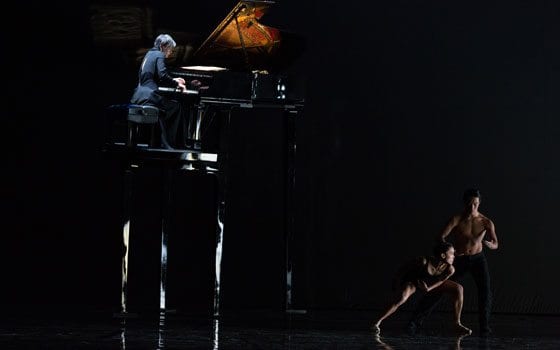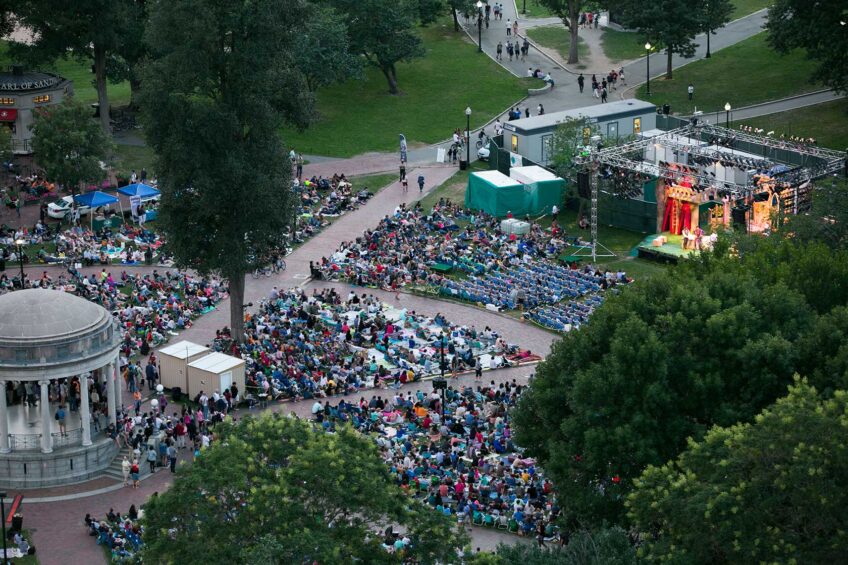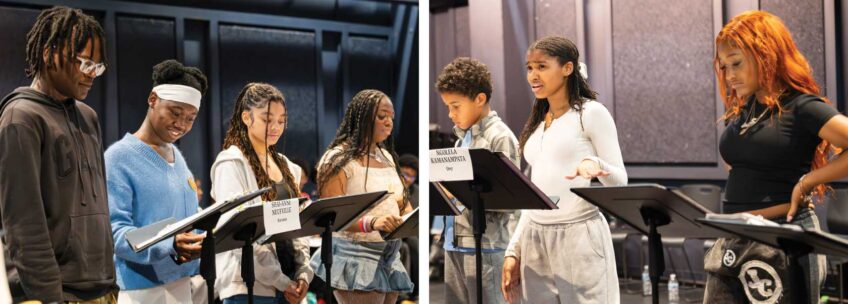
In a thrilling production at the Boston Opera House through March 17, the Boston Ballet brings three works by contemporary choreographer Jirí Kylián to the United States for the first time. Titled “All Kylián,” the program presents “Wings of Wax,” “Tar and Feathers” and “Symphony of Psalms.”
Prague-born dancer and choreographer Jirí Kylián, artistic director of Nederlands Dans Theater since 1976, is renowned for challenging dancers and riveting audiences with stunning stagecraft and choreography.
The Boston Ballet now has nine Kylián works in its repertoire, more than any other company in North America.
At the heart of Kylián’s choreography is the art of paradox. Kylián lays bare the inner life of human struggle and exaltation, bringing opposing forces into a finely tuned state of equilibrium. His dancers spin on an unseen axis; defying gravity, they leap, spiral and intertwine at high speeds. Yet just as quickly they shift into stillness as sculpted forms and morph from scenes of tender intimacy into abstract, angular formations.
Long-time Kylián collaborator Kees Tjebbes redesigned the lighting of the three works and supervised the sets of the Boston Ballet production; the program lasts about two hours with two intermissions.
“All Kylián” opens with “Wings of Wax,” (1997), a spare and striking set lit by Michael Simon. A bare tree hangs upside down from the ceiling, its roots above. The eight dancers wear black leotards (designed by Joke Visser) that expose hands, arms and feet. The men wear black socks. The light accents their often loose and languid limbs while the rest of their bodies are held taut.
In solos, duos, trios and as an ensemble, the dancers move to selections from Johann Sebastian Bach and minimalist passages by Philip Glass, Heinrich von Biber and John Cage. They execute ecstatic leaps and acts of improbable balance. In the finale, their arms and legs intertwine like the branches of the tree.
The program’s fusion of visual and auditory imagery peaks in “Tar and Feathers” (2006), unifying the drama of voice, music, movement and acting.
In this work for six dancers, Kylián renders the last poem written by Irish playwright, author and director Samuel Beckett, “What is the Word” (1989). The Nobel laureate wrote the poem at age 83, and dedicated it to his friend, actor and director Joe Chaikin, who had directed several of Beckett’s plays. Several strokes left Chaikin with severely impaired speech, a condition he fought and also dramatized until his death in 1983 with staged works written for him.
Like Beckett, Kylián brings showmanship, humor, gravity and grace to the contemplation of life’s tragic limits and grandeur.
In the opening scene, the stage is bare except for a mound of white Styrofoam.
As a cloud-like band of light slowly descends from the ceiling, six dancers perform alone and in duos and trios. Outfits again by Visser, bare-chested men wear black pants and socks. Dressed in short black leotards, the women’s legs are revealed.
A soloist contorts her mouth as if in horror or rage, and emits a deep, growling bark. Jutting, angular gestures that mimic the flailing of an impaired person alternate between moments of flowing, liberating grace, as if to suggest the struggle of expressing lost or faded words.
As a spotlight on a slow-moving crane lights the dancers, the spectacle emerges of a pianist playing a grand piano elevated by 10-foot stilts. Tomoko Mukaiyama, a musician who performs this work with dancers throughout the world, is stately in a long black dress. She accompanies the music — Mozart’s Piano Concerto No. 9 and spare electronica by Dirk Haubrich — with live improvisations in response to the dancers.
A mirrored floor coated in reflective plastic seems to elongate the dancer’s and piano’s legs. The group moves slowly, as if weighed down, or joined in sculpted shapes. At one point, two men on hands and knees form a single organism. Standing astride their rising and falling backs, a female dancer with a fierce expression strikes a pose like a pharaoh in a royal procession.
When the music shifts from Mozart to Haubrich, the stage darkens and the silhouettes of the piano and a departing dancer dissolve into shadows. The voice of Jirí Kylián reads Beckett’s poem, and the spectacle takes another unexpected turn, true to Beckett’s own playfulness as he peers into the abyss.
“All Kylián” closes with the majestic “Symphony of Psalms” (1978), set to a choral and orchestral work by Igor Stravinsky commissioned by the Boston Symphony Orchestra in 1930 for its 50th anniversary. Accompanying the 16 dancers are the Boston Ballet Orchestra, led by musical director Jonathan McPhee, and the 58-member New World Chorale, conducted by artistic director Holly MacEwen Krafka.
“Somehow, in this work we were able to create a certain kind of ‘spiritual architecture’ filled with physicality, and a certain degree of faith,” Kylián writes in his website.
A shimmering silver curtain reveals the set, designed by William Katz — a jewel-toned mosaic of Persian tapestries. In contrast to this opulence, the dancers wear muted costumes by Joop Stokvis, dresses and matching shirts and pants in pale earth tones.
Kylián’s choreography for this work is full of patterns, like the carpets and the music. As the dancers mold their bodies into rows and columns, some formations evoke the ribbed arches of a transept in a gothic cathedral. When one dancer lifts another into a cruciform shape, the form suggests the Christian symbol of the cross. As the orchestra’s wind instruments create a sinuous melodic line conjuring a Middle Eastern thread, the dancers’ kneeling bodies face the carpets, evoking a mosque.
Yet the work wears its religiosity lightly, and some ensemble formations resemble folk dances. Amid the communal rituals are intimate, balance-testing duets. Holding her body arrow-straight, one dancer leans at a 45-degree angle as she walks over a row of chairs, her hand held lightly by her male partner.
Evoking communal bonds of all kinds, “Symphony of Psalms” celebrates the universal power of music and dance to elevate and connect people.






